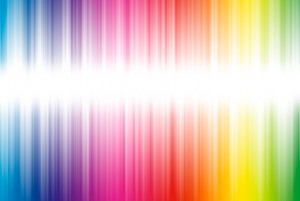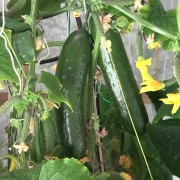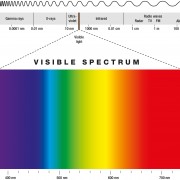Light Intensity and Duration

Light Intensity and Duration
There are two important factors for providing light to house plants which are intensity and duration. Of course we all know there are varying intensities of light and the term which we use to calculate the intensity are referred to as PAR, photo-synthetically active radiation.
PAR is normally quantified as µmol photons m−2s−1, which is a measure of the photosynthetic photon flux (area) density, or PPFD.
Photosynthesis is a quantum process therefore the amount of light exposure is based on plant types, typically in ranges between 8 to 18 hours.
When working with High intensity LEDs, the nutrient and water intake with certain plant families may be reduced slightly, and in some circumstances so will LSP-Light Saturation Point.
Light Intensity and Duration are two things a gardener can use to calibrate and describe the total quantity of light (PAR) delivered over the course of an entire day. Light intensity and duration is sometimes reported as the number of moles (particles of light) per second.
Unlike LUX and Lumens (which have a direct relationship to the human perception of brightness), UMOL/M2/S is a unit for PPFD. PPFD is an abbreviation of Photosynthetic Photon Flux Density. This measure looks at the spectrum from the perspective of the plant and measures the light volume of the light provided by the light source, over a given space an instant in time. In other words, it is a measurement of the light (photons) that reach the target each second. PPFD is a measure of light quantum, (photon quantity) of photosynthetically active radiation (PAR), light energy of an appropriate spectrum, which reaches, in a given time and over a given area, the surface of the plant. Plants speed of photosynthesis depends on the light quantum (photon quantity) absorbed by the plants. You can think of the stomata as the plants mouth for the consumption of C02, which is stimulated to open by the light landing on the leaf surface and the roots are the plants mouth for nutrients. PPFD is a measure of the availability of the correct food (light spectrum) in a moment in time and over a fixed area of the plants foliage.
A way to understand the delivery of light for PPFD umol/M2/s from a LED solid state device let us examine how water is poured out a watering can with and without a spout (rose). The term “watering can” first appeared in 1692, prior to that, it was known as a “watering pot”.
Imagine, that light is water contained in a watering can; you can pour it out of the spout very quickly into a small area. However, when you attached your rose (a device, like a cap, with small holes) to the spout you now have the ability to increase the scope of the volume. Given that your watering can contains the same amount of fluid (light) and you pour it out over the same amount of time, but over a greater given area, you can begin the see how light is measured over a specific area per second,(umol/M2/s-1 Light Intensity and Duration). Light is measured in this way using PPFD, as it looks at the speed and quantity of the delivery of the light, whilst considering the spectrum and the area covered.
When the optical radiation intensity (PPFD umol/M2/s) reaches the highest point (also called the light saturation point-LSP), plants have the quickest carbon dioxide exchange speed (carbon dioxide absorption and oxygen release). Carbon dioxide (C02) is a material required for photosynthesis as the plant uses it to build cells, if they leaf, flower, root or stem cells. They all require C02 to make this happen.
Light and photosynthesis is remarkably dynamic in nature as there are so many fluctuations from the shading of light from overhead cloud to the comparison of considerable increases when there are no clouds in the sky. In a contrasting nature Light is distributed quite evenly upon the canopy, but when looking at the light from the plants perspective within the multilayered density of the vegetation there are variations and fluctuations within lower canopy layers as the availability of light begins the scatter and change.
But when using LED light as supplementary light (under steady light conditions) and when using umol/M2/s you can quantify a measure for Photosynthetic Photon Flux (PPF) for Photosynthetically Active Radiation (PAR) in the range of 400 to 700nm. This equation can be used above or below plants and even on a diagonal in growth rooms and greenhouses when the JUST LED US lights are positioned diagonally so one can creative and use umol/M2/s to measure the radiation inside and at the bottom of plant canopies as well.
Please also see: Daily Light Integral, Keeping Your LED Light at a Proper Distance





Leave a Reply
Want to join the discussion?Feel free to contribute!